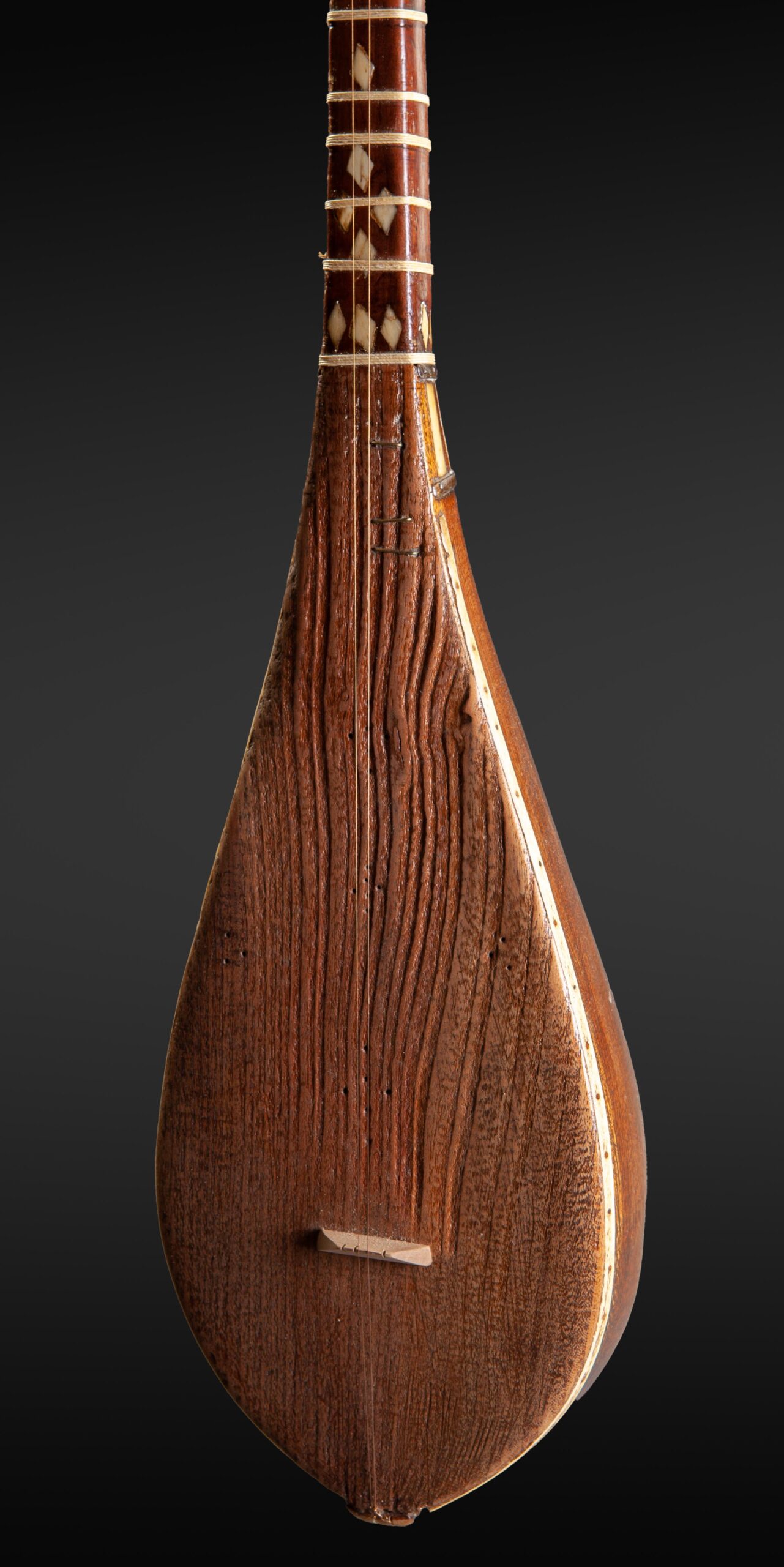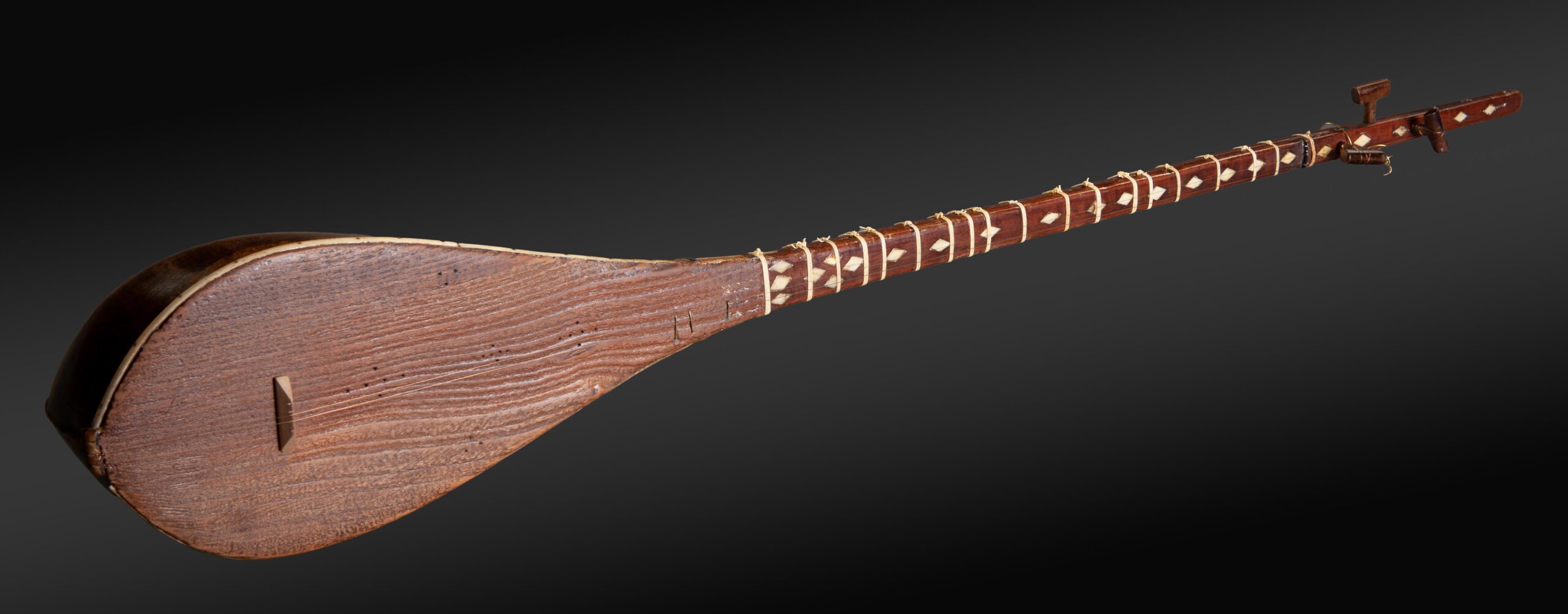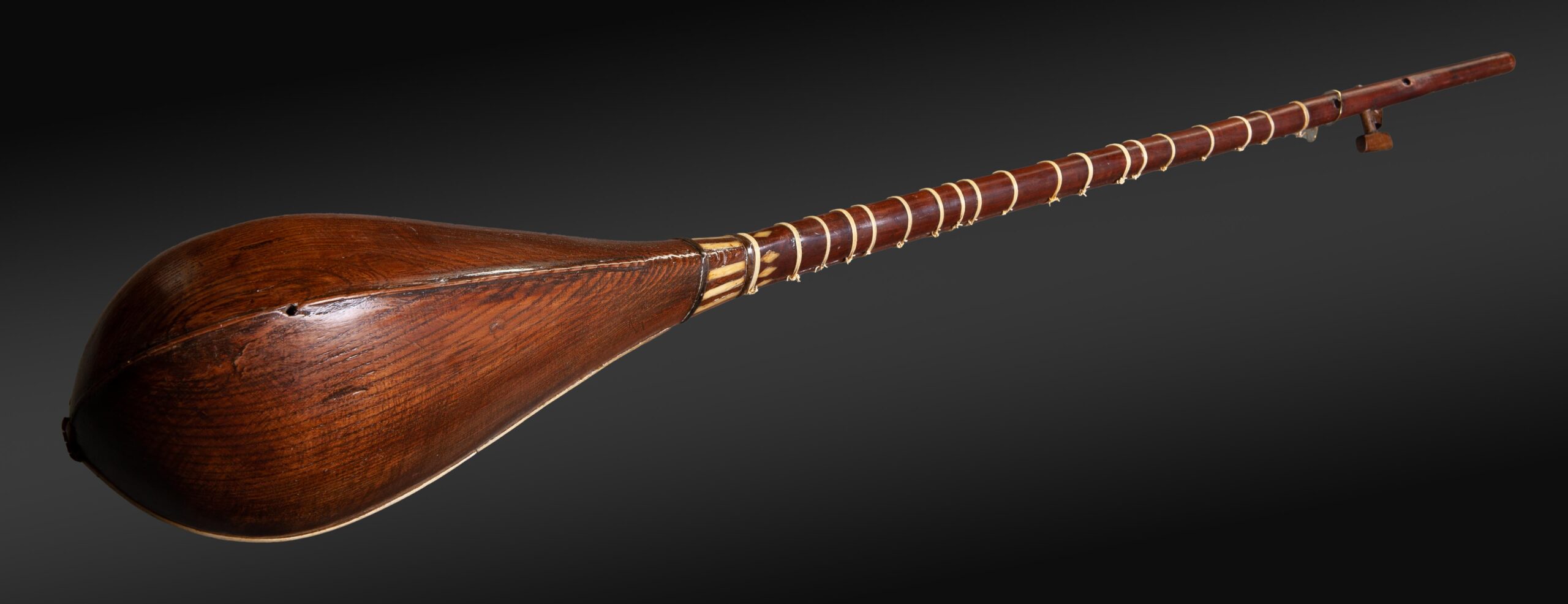DOTAR (Model n°2)
Iran, Khorasan province.
Afghanistan, Herat province. 20th century.
This long-necked lute is comparable to the previous one and takes on its characteristics.
It is played in the east of Iranian Khorràssàn and more particularly around the town of Torbat-e-Jàm,
The classically crafted resonance box, hollowed out of a block of mulberry, is recognizable by the central rib which runs along the back of the instrument.
The mulberry soundboard is pierced with small holes delimiting geometric figures, and bordered around its perimeter with a bone filet.
The bone veneer decoration on the fingerboard and heel of the neck is also typical of this regional style.
Three metal strings.
The influence of popular Afghan music has led to an evolution of this type of dotar, on the other side of the border, in the surroundings of Herat in western Afghanistan. It was characterized by an increase in the size of the instrument, the addition of a third string, and what is the case here, additional frets directly fixed to the soundboard.
Length: 100.7cm Width: 16.2cm Depth: 14.7cm
Materials: Mulberry, fruit wood (apricot), bone…
Bibliography:
Jean During: “T 2, p.122) “the Grove dictionary of Musical Instruments” Laurence Libin: Editor in Chief. T.2, pp. 122… Oxford University Press 2014.
Jean During: “The dotâr family in Central Asia. Organological and musicological survey,” Porte Akademik. Organoloji sayasi, Istanbul, 2012.


